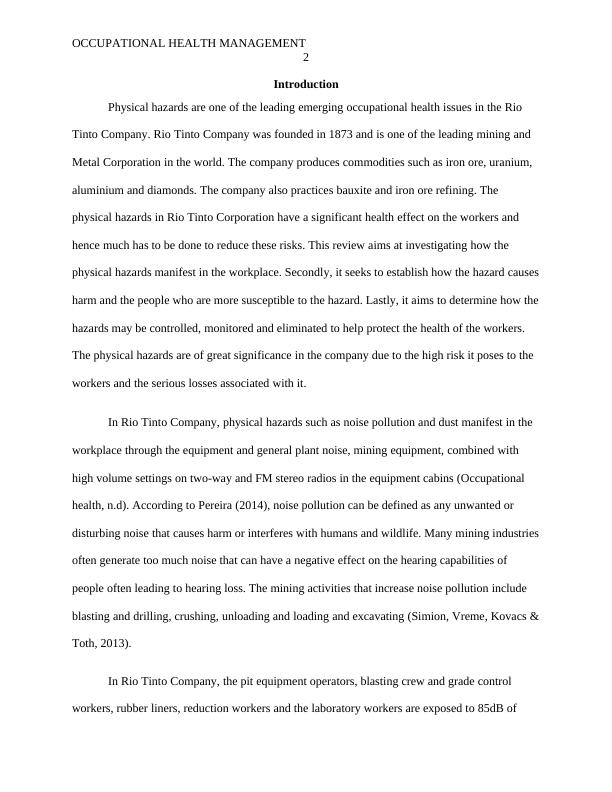Physical Hazards in Rio Tinto Company: Noise and Dust
8 Pages2022 Words66 Views
Added on 2023-01-18
About This Document
This review investigates the manifestation of physical hazards, specifically noise pollution and dust, in the workplace of Rio Tinto Company. It explores the harm caused by these hazards and identifies the workers who are more susceptible. The review also aims to determine how these hazards can be controlled, monitored, and eliminated to protect the health of the workers.
Physical Hazards in Rio Tinto Company: Noise and Dust
Added on 2023-01-18
ShareRelated Documents
End of preview
Want to access all the pages? Upload your documents or become a member.
Noise in the Mining Industry: Occupational Health Hazard and Control Strategies
|9
|2266
|116
Sustainability Practices in Business
|8
|1587
|153
Managing Noise Pollution in Mining Industry
|24
|2122
|130



